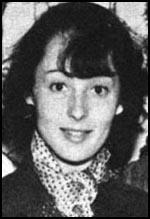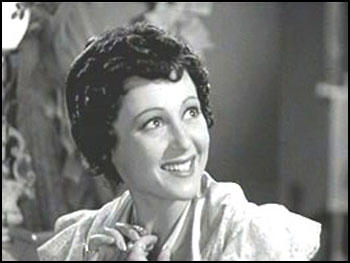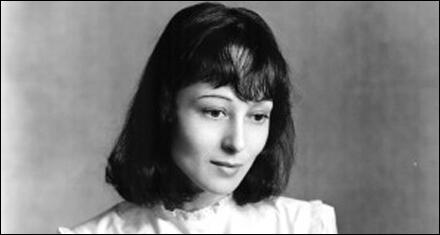Luise Rainer

Luise Rainer was born into a Jewish family in Dusseldorf, Germany, on 12th January 1910. She was discovered by Max Reinhardt in 1926 and became part of his theatre company in Vienna. Rainer was only a teenager when she made her first film. This was followed by Sehnsucht (1932), Madame hat Besuch (1932) and Heut Kommt's Drauf (1933).
The American journalist, John Gunther, met her in 1934. Gunther's friend, William L. Shirer, pointed out that this caused problems for his relationship with his wife, Frances Fineman Gunther: "He fell for her to an extent that I don't think Frances was pleased. John had a roving eye and liked to flirt." Rainer later recalled: "He was tall, husky, and blond. He was, of course, very bright and had a great sense of humor. I thought he was a terribly nice fellow... However, I must say something simply and brusquely: I was never in love with him, or anything of that kind."
Rainer's Jewish background made her apprehensive w hen Adolf Hitler and the Nazi Party gained power. In 1935 she moved to Hollywood and managed to obtain a seven-year contract with the Metro-Goldwyn-Mayer studio. She was considered to be very beautiful but she later claimed: “I was nobody to make a pass to. I was very thin like a boy and I was very un-sexy.” Her first American role was in the film Escapade (1935). She was a last minute replacement for Myrna Loy. The star of the film, William Powell, was very impressed with Rainer and told MGM boss Louis B. Mayer, that she was a future star.
Despite this recommendation, she was only given a small part of Anna Held in The Great Ziegfeld (1936). The film was a great success and Rainer won the Oscar for Best Actress. The award was highly controversial at the time because her role was so short and relatively minor that it better qualified for a supporting nomination. One critic, Jon Hopwood has argued: "Most observers agree that Rainer won her Oscar as the result of her moving and poignant performance in just one, single scene in the picture, the famous telephone scene in which the broken-hearted Held congratulates Ziegfeld over the telephone on his upcoming marriage to Billie Burke while trying to retain her composure and her dignity. During the scene, the camera is entirely focused on Rainer, and she delivers a tour-de-force performance. Seventy years later, it remains one of the most famous scenes in movie history."

In 1937 Rainer married Clifford Odets, a member of the American Communist Party. His plays, Waiting for Lefty, Awake and Sing! and Till the Day I Die, established him as a champion of the underpriviledged. However, he had accepted a lucrative offer to become a film screenwriter and met Rainer on the set of Escapade.
In her next role, producer Irving Thalberg cast her in The Good Earth, based on the book of the same name by Pearl Buck. This resulted in her second Oscar for Best Actress. Rainer therefore became the first two-time Oscar winner in the two major acting categories. She was later asked if she was proud of these two performances. Rainer replied: "I was never proud of anything," she said. "I just did it like everything else. To do a film - let me explain to you - it's like having a baby. You labor, you labor, you labor, and then you have it. And then it grows up and it grows away from you. But to be proud of giving birth to a baby? Proud? No, every cow can do that." In another interview she said: "I don’t believe in acting. I think that people in life act, but when you are on the stage, or in my case also on screen, you have to be true."
A non-conformist actress, Rainer refused to accept the values of Hollywood. In 1937 Rainer had to be forced by Louis B. Mayer to receive her Oscar. She later claimed that: "For my second and third pictures I won Academy Awards. Nothing worse could have happened to me." Rainer next film was The Emperor's Candlesticks (1937). This was followed by The Big City (1937), Frou Frou (1938), The Great Waltz (1938) and Dramatic School (1938).

The studio insisted on forcing her into roles she considered unworthy of her talents. “All kinds of nonsense... I didn’t want to do it, and I walked out." Mayer said, "That girl is a Frankenstein, she’s going to ruin our whole firm... we made you and we are going to destroy you". Rainer decided to leave Hollywood. The director, Dorothy Arzner, claims that she was being badly treated because she had married a communist.
Louis B. Mayer took a keen interest in Rainer and on one occasion he asked her: "Why don't you sit on my lap when we're discussing your contract, the way the other girls." As Ken Cuthbertson pointed out: "As long as she was making money for him, Mayer tolerated Rainer's feistiness. After a couple of ill-conceived and unsuccessful movies, however, the two exchanged angry words" and their relationship came to an end.
In 1938 Rainer went to Europe where she helped provide aid to children who were victims of the Spanish Civil War. Rainer and her husband moved to New York City. They also spent time in Nichols, Connecticut. Rainer said that Odets was ''my passion’’ but was a possessive man. When Rainer developed a friendship with Albert Einstein, Odets was said to be so consumed with jealousy that he savaged a photograph of Einstein with a pair of scissors. The couple were divorced in 1943.
Rainer married Robert Knitte, a publisher, in 1945. After their marriage, she effectively abandoned film-making, living for a while in Switzerland and then Belgravia. She was later encouraged out of retirement to appear in The Gambler (1997).
When she reached her 100th birthday she told a friend that “The secret of a long life is to never trust a doctor." According to the Daily Telegraph, when a young man got up for her on a London bus, she looked at him and said: “Do I really look that old?”
Luise Rainer died aged 104 on 30th December, 2014.
Primary Sources
(1) Mick Brown, The Daily Telegraph (22nd October, 2009)
The two Academy Awards that Luise Rainer won for best actress stand on a bookshelf in her study. Actually, that’s not quite true. The Oscar that Rainer won for The Great Ziegfeld in 1936 is the original – a deep and satisfyingly aged bronze. The Oscar that she won the following year for her role in The Good Earth she gave to the removal men who moved her from Switzerland to London some years ago. “I used it as a doorstop,” Rainer says airily. “And it was bent.” The shiny gild statuette that now stands on her shelf is a recent replacement.
Luise Rainer will be 100 in two months. The five years that she spent in Hollywood are but the blink of an eye in her life, but long enough for her to have made cinematic history – the first person to win the Oscar in two consecutive years, an achievement that only Katherine Hepburn has matched.
For the last 20 years, since the death of her husband Robert Knittel – a publisher, to whom she was married for 47 years – Rainer has lived in an elegant Belgravia apartment, furnished with Persian rugs and deep, chintz sofas, the walls crowded with works of art. There is a 15th century Dutch painting on wood, showing cherubs holding baskets filled with babies. “The first flying saucers...” Rainer says. And aren’t those exquisite drawings by Degas? ''They’re copies,’’ she says airily. “Everybody, even the experts, can’t tell the difference.”

